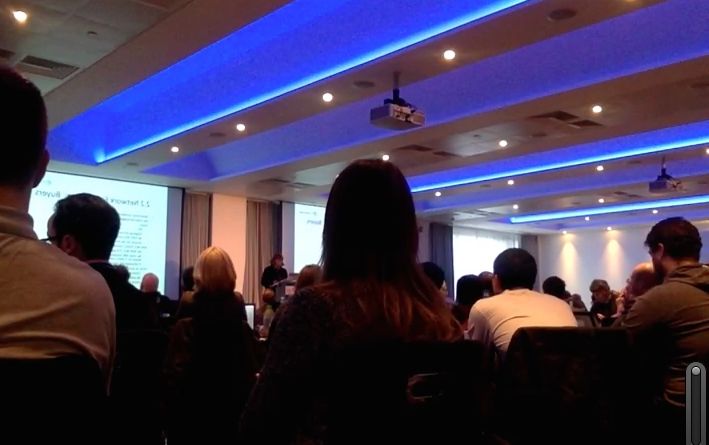Published on January 26th, 2015
On January 22, 2015, I had the honour of speaking at the UKNOF30 conference in London. I gave an update on the IPv4 transfer market in RIPE region and in the UK in particular. It was my first UKNOF meeting and I greatly enjoyed the experience.
 |
I talked about three key items: a summary of the typical IPv4 transfer process in the UK, a summary of the IPv4 market in RIPE region in 2014, and I gave some predictions for IPv4 trading in 2015.
My introduction stated that the trading of IPv4 addresses is a relatively young market, beginning about 4 years ago with the Nortel-Microsoft transaction for 666,000 IP’s at 11.25 USD. I was the Director of Engineering at Nortel and that is how I got into the IPv4 business. Since then supplies in APNIC and RIPE regions have declined, and monetization has emerged as sellers have brought their supplies to market. As a result RIPE is now the most robust trading region globally with almost 10 million IP’s transferred in 2014. APNIC transferred 3.85 million IPs and ARIN transferred 3 million IPs.
The IPv4 purchase process has a few steps, with the main points being that the buyer and seller do an Asset Purchase Agreement to document the transfer, then the buyer normally puts the funds on deposit, in escrow or a solicitor account, followed by the transfer from seller to buyer, then the release of funds to the seller.
Engineering plays an important role in an IPv4 purchase. There are tasks like determining the number of IPs that are needed, and securing budget approval. The costs considered include the IPs, and the ongoing RIPE membership fees, but note that there should not be any broker fees charged to buyers.
RIPE policy is favourable for transfers in that there is no needs justification in RIPE region. The RIPE inter-RIR policy should be passed soon, and it requires needs justification for 50% utilization over 5 years. IPs cannot be re-transferred for 24 months.
Engineers should check the quality of the IPs before a transfer. Check for blacklisting using a site such as senderbase.org. Check the RIPE Database (Whois) against the seller organization documents.
I next discussed the main negotiation points when buying or selling IP’s. Usually, price, IP cleanliness, the method of payment, the legal venue for agreements, and warranties are key elements.
The 9.8 million IPs transferred in the RIPE region in 2014 showed growth over time as the year went on. In the UK, there were about 1.1 million IP’s transferred representing ~11% of all IPs transferred in RIPE region, with two big lumps in August and then a really big lump in November. It turns out these were mostly companies transferring IP’s between subsidiaries. I find the source of IP’s in the UK to be very interesting as well. There is definitely a preference to purchase IP’s from within the UK.
Lastly to speak to prices, we saw /16’s go for between $8.20 and $11.25 per IP in the UK. The larger the block the lower the price. /20’s averaged $13.50 per IP.
I closed with some predictions for 2015. We are seeing very tight supplies right now in RIPE region relative to demand, which is pushing prices up. Prices are going to be reduced however, by the introduction of new supply, from ARIN region, or from new RIPE sources coming to market. I predict that companies will pay a small premium for RIPE region IPs to avoid needs justification on ARIN IPs. And lastly, global prices will not harmonize until policy does. As long as there is unequal needs justification policy, then prices will not be the same in different regions.